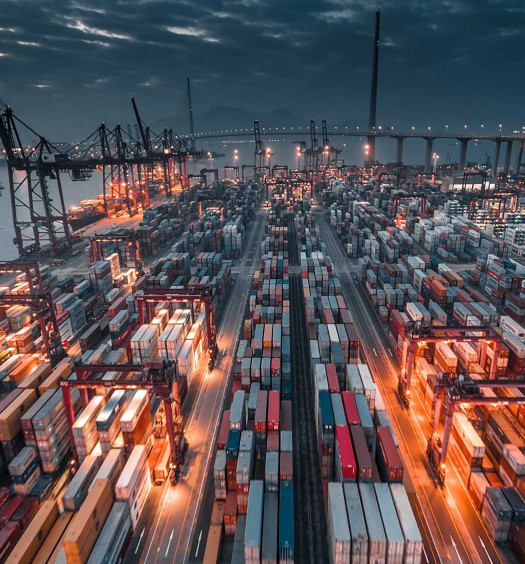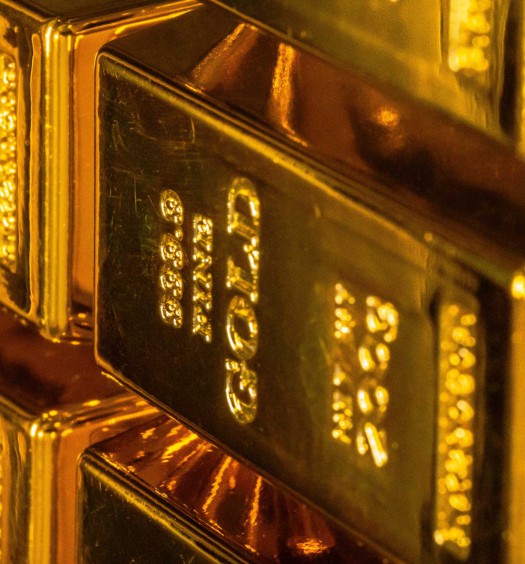The latest syndrome being talked about in Washington is the so-called TACO: “Trump Always Chickens Out.” The idea is that Trump always ends up backing down. This might be a bit exaggerated, but it’s clear there’s often a big gap between his threats and the final decisions—especially when the opponent puts up a strong fight. That was the case with China, where a “ceasefire” looked more like a retreat. What will happen with the reciprocal tariffs set to expire on July 9? The White House’s position has been weakened by a ruling from the U.S. Court of International Trade, which found that the President cannot use the International Emergency Economic Powers Act under such circumstances. Though the decision has been appealed by the administration, it still offers a dignified exit from a poorly handled issue from the start.
That doesn’t stop Trump, who, on a Friday, threatens the EU with immediate 50% tariffs, only to withdraw the threat by Sunday! On the other hand, the legally stronger decision to raise tariffs on steel and aluminum from 25% to 50% remains in place. The main “victims” are Mexico and Canada—and, of course, American manufacturers, who are now paying aluminum premiums far above the LME price. Even a can of beer is starting to feel like a luxury item. The coming weeks promise more unpredictable twists, and we’ll see if the TACO theory holds true.
Trump’s inner circle is also changing: goodbye to Moke Waltz, and especially to Elon Musk—who, at least, hasn’t lost his boldness in criticizing the “One Big Beautiful Bill Act,” which has pushed up interest rates and weakened the dollar.
Meanwhile, there seems to be growing indifference toward major global crises, whether it’s Ukraine or Gaza. It’s clearly easier to tighten the screws on Venezuela, strike a deal with Iran, or try to intimidate South Africa by staging another “White House trap” for the unfortunate President Ramaphosa.
In the background, markets are moving in all directions, but mostly downward. Growth forecasts are weakening—or even stagnating—in Europe, Japan, and even the U.S. Curiously, despite a sharp increase in OPEC+ quotas, oil prices remain fairly firm around $65 a barrel for Brent, though the outlook is bearish. The same goes for natural gas and even more so for coal, due to Chinese overproduction.
The metals sector remains the most disrupted, hit by tariffs, export restrictions, and the return of mining nationalism in Africa. Agricultural markets, on the other hand, are reacting to strong global harvests, particularly in China, India, and South America. Even coffee prices are edging down. But the most significant shifts are happening in global trade flows. China is now playing Brazil against the U.S., while Bangladesh—the world’s top cotton importer—has started buying from the U.S. rather than West Africa, its previous main supplier. In this kind of global trade chess game, it’s always the poorest and weakest who lose in the end.
Next key moment: mid-July. TACO or not, we’ll see.
This is an excerpt from the monthly summary published by Cercle CyclOpe. The full version, spanning 150 pages, is available by subscription. For more information, please contact us at cyclope@ampersandworld.ch
Market brief, June 2025
Energy
❚ OPEC+ has decided to increase oil supply by another 411,000 barrels per day in July. Since April, the group has added a total of 1.37 million barrels per day (mb/d) back into the market, though the real figure is slightly lower if we account for quota overages. Most forecasts estimate that global oil demand will rise by around 750,000 barrels per day in 2025. This latest decision appears to be a compromise: Saudi Arabia pushed for a larger supply increase, while Russia, backed by Algeria, argued for a pause in production hikes.
❚ Steam coal prices are falling almost across the board, even in China, where demand is now declining despite production reaching record highs.
❚ According to the IEA (International Energy Agency), global energy investment is expected to reach $3.3 trillion in 2025. Out of this, around $2.2 trillion will go toward renewable energy, including $450 billion for solar, $66 billion for battery storage, and $400 billion for electricity grids.
❚ According to AXS Marine, there are 792 active LNG carriers worldwide. Of these, 703 were built in South Korea and Japan, while only 58 were constructed in China. There are also five U.S.-built LNG carriers, but they are currently not in use. When it comes to order books, South Korean shipyards have 231 LNG carriers on order, while China has 101. The U.S. Trade Representative (USTR) has requested that at least 1% of U.S. LNG exports be shipped using vessels built in the United States by 2030—but even that modest goal appears unachievable, given the current state of the U.S. shipbuilding industry.
❚ There were already cases of ship-to-ship transfers of Iranian and Venezuelan oil being rebranded as “Malaysian oil” before being imported by China. But some traders have gone even further, disguising Venezuelan crude as Brazilian “bitumen”, with vessels turning off their tracking systems to avoid detection.
❚ The United States has once again sanctioned companies in Singapore and China involved in the trafficking of Iranian oil, using legislation related to “terrorist activities.” However, the pressure is now also increasingly targeting Chinese banks, signaling a broader crackdown.
❚ Oil price forecasts continue to trend downward. According to a Reuters poll conducted in early May, the average price of Brent crude in 2024 is now expected to be $68.98 per barrel, down from a previous forecast of $72.94.
❚ The International Energy Agency (IEA) estimates that global oil production will increase by 1.6 million barrels per day (mb/d) in 2025, which is 300,000 b/d higher than their previous forecast. Global demand is projected to rise by 740,000 b/d, though that figure is expected to drop to 650,000 b/d toward the end of the year. In its analysis of electric vehicle (EV) impacts, the IEA projects that EVs will displace 1.4 mb/d of oil demand in 2024, rising to 5 mb/d by 2030.
❚ According to the IMF, Russia’s fiscal breakeven oil price is $77 per barrel of Brent, while Saudi Arabia’s is estimated to be above $90. Meanwhile, the EU has proposed at the G7 Finance meeting to lower the price cap on Russian oil exports from $60 to $50 per barrel, based on Brent pricing.
❚ Goldman Sachs maintains its forecast for Brent/WTI at $60/$56 for the remainder of 2025, and $56/$52 for 2026.
Metals
❚ In April, China exported 10.4 million tonnes of steel, a 13.4% increase compared to 2024, and a level close to the record set in September 2015.
❚ According to Jim Lennon, one of the most renowned analysts in the nickel market, the global market will remain oversupplied until 2027 or 2028. He specifically forecasts that demand for batteries will be lower than previously expected, reaching only 967,000 tonnes by 2030.
❚ Gabon has decided to ban exports of raw manganese starting January 1, 2029. Eramet controls the Moanda mine there, which accounts for 15% of global production. Currently, 17% of the output is processed locally, but the main challenge moving forward will be ensuring the energy resources needed for domestic processing.
❚ At $35 per ounce, silver is at its highest level in thirteen years. The market is in deficit for the fifth consecutive year, and analysts are beginning to talk about a possible rise to $40 per ounce, especially as the gold-to-silver ratio (currently at 94) starts to improve.
❚ In the first four months of 2025, China exported a record 37.89 million tonnes of steel, an 8.2% increase compared to the same period in 2024.
❚ A U.S. judge has blocked the transfer of Apache community land required for the development of Rio Tinto’s Resolution Copper mine. The decision suspends the land transfer pending a Supreme Court ruling.
❚ For the first time, China has granted an export license for rare-earth magnets to Volkswagen, marking a significant shift in trade policy for these strategic materials.
❚ According to the Cobalt Institute, global cobalt demand is expected to reach 400,000 tonnes, up from 222,000 tonnes in 2024. By 2030, electric vehicles would account for 57% of demand, compared to 43% today. While the market had a surplus of 36,000 tonnes in 2024, it is projected to move into deficit. The Democratic Republic of Congo’s (DRC) market share is expected to fall from 76% to 65%, with Indonesia’s share rising from 12% to 22%.
❚ Following China’s export controls on tungsten introduced in February, prices in Europe have hit their highest level since 2013, reaching $400 per tonne for APT (ammonium paratungstate). China also cut its 2025 export quota by 6.5% to 58,000 tonnes.
❚ On May 30, Donald Trump announced a doubling of tariffs to 50% on steel and aluminum, specifically targeting South Korea and Vietnam. As a result, by June 2, the U.S. premium on aluminum compared to the LME jumped to $1,279 per tonne, a 164% increase since the start of the year, and it’s expected to rise further to at least $1,400 to reflect the new tax impact.
❚ Goldman Sachs expects aluminum prices to average $2,280 in the second half of 2025, falling slightly to $2,230 in 2026. The market is projected to be oversupplied by 1 million tonnes in 2026.
❚ In Kinshasa, there are hopes of reaching a mining agreement with the United States before the end of June. The main sticking point is the potential involvement of Rwanda. Discussions are focused on lithium, cobalt, and coltan.
Grains and Agriculture
❚ China expects its soybean imports to decline by 2.8% in the 2025/2026 season, falling to 95.8 million tonnes. The goal is to reduce the soy intensity in animal feed rations, improving efficiency and lowering dependence on imports.
❚ India is set to produce a record wheat harvest for the marketing year ending June 30, 2025, with 117.5 million tonnes, up from 113.3 Mt in 2024. Rice production is also expected to reach a record 149 Mt, bringing total grain output to 354 Mt, compared to 332.3 Mt the previous year. With India’s Food Corporation already purchasing significant volumes (expected at 32 Mt), wheat imports will not be necessary.
❚ For the 2025/26 season, consulting firm Sovecon forecasts Russia’s wheat exports at 40.8 million tonnes, and total grain exports at 49.4 Mt. In contrast, ASAP Agri anticipates a drop in Ukrainian wheat exports to 15 Mt, reflecting the continued impact of the war and logistics constraints.
❚ Egypt’s new public wheat buyer, Mostakbal Misr, has just purchased 180,000 tonnes of French wheat directly, at prices of $246 per tonne for immediate payment and $256 per tonne under a 180-day letter of credit.
❚ U.S. beef prices surged in March, with the average price reaching $5.79 per pound, a 12.8% increase year-on-year. Steak prices hit $10.98 per pound, driven by a drought that reduced cattle herds, tightening supply.
Tropical Commodities
❚ According to Brazilian consultancy JOB, Brazil’s sugar exports are expected to remain stable at 35.1 million tonnes in 2025/26, with total production estimated at 46 million tonnes. In 2023/24, exports hit a record high of 35.4 Mt.
❚ According to Dreyfus, the global sugar market is projected to shift from a deficit of 5.2 million tonnes in 2024/25 to a slight surplus of 400,000 tonnes in 2025/26. India’s production is expected to rise from 26 Mt to 30.5 Mt.
❚ The USDA estimates global sugar production in 2025/26 at 189.3 million tonnes, up 8.6 Mt from 2024/25, with the following country breakdown:
-
Brazil: 44.7 Mt
-
India: 35.3 Mt (+25%)
-
EU: 15 Mt (–9%)
-
Thailand: 10.3 Mt (+2%)
-
China: 11.5 Mt
Meanwhile, the International Sugar Organization (ISO) projects a global deficit of 5.5 Mt for 2024/25.
❚ Franco-Brazilian photographer Sebastião Salgado, who recently passed away, began his career as an economist at the International Coffee Organization in London.
❚ Côte d’Ivoire has already sold half of its cocoa export permits for the upcoming season, totaling 650,000 to 700,000 tonnes. So far, the Coffee and Cocoa Council (CCC) has capped quotas at 1.3 million tonnes, compared to the usual 1.7 Mt.

Le Cercle CyclOpe
Its purpose is to regularly bring together (twelve times a year) stakeholders in international markets: bankers, insurers, brokers, managers, traders, producers, and consumers gather informally over lunch to exchange ideas.
Full membership in Cercle CyclOpe includes:
• Cercle meetings:
Six lunches are held in Paris, at L’Automobile Club de France.
Six lunches are held in Geneva, at Cercle de La Terrasse.
• The annual CyclOpe report (Available in both print and digital formats, in English and French);
• Access to the Cercle des Experts and the international CyclOpe network;
• Subscription to the monthly summary (Each month, a comprehensive document exceeding 150 pages, serving as a reference).
To subscribe to CyclOpe reports or events, please contact us at cyclope@ampersandworld.ch.
Find out more about Cercle Cyclope















Social Community